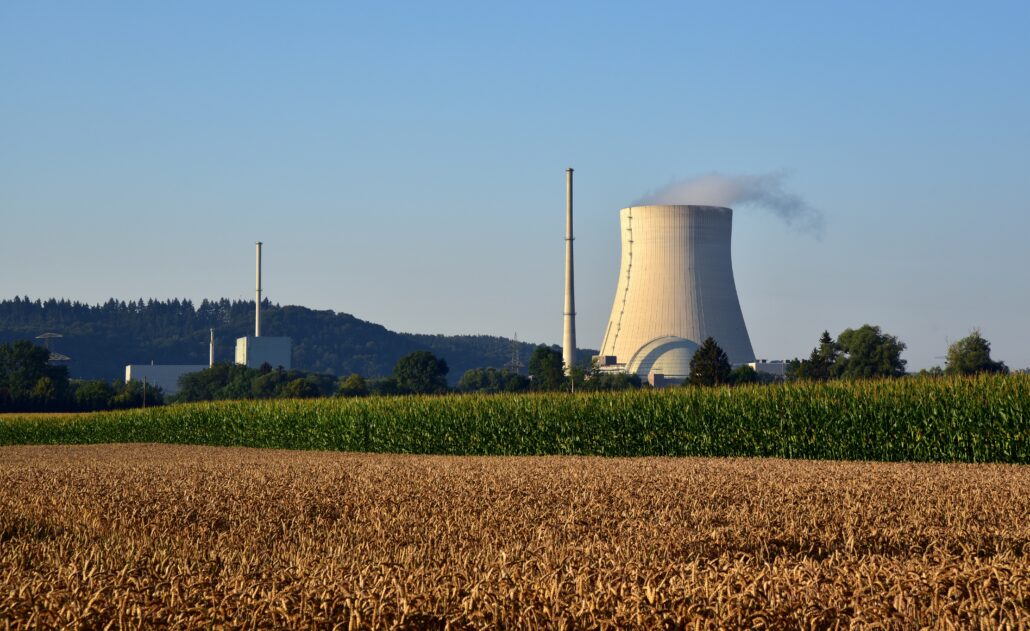March 09, 2022

In January we wrote about the European Commission’s proposal to label certified nuclear power and natural gas as clean energy sources, thus causing anger among plenty environmental associations who accused Europe of greenwashing [1].
Today, as a consequence of the Russian-Ukrainian conflict, the situation has radically changed and it is no longer certain that Russian natural gas will keep flowing into Europe in the near future. Since Russia is the EU’s main natural gas provider, the leaders of some European countries decided to reopen coal power plants to be more energy-independent. Such move strongly collides with Glasgow’s COP26 objective to phase down from coal [2].
Unfortunately, renewable energies are not yet able to satisfy Europe’s energy needs [3]. Currently, Europe’s only way to guarantee its energy independence and respect the climate agreements seems to rely on nuclear power.
Is nuclear power clean energy?
The answer is controversial and must be analyzed with caution, starting from the beginning. There are two atomic interactions that liberate energy: nuclear fusion and fission. Nuclear fusion happens occurs with hydrogen. Deuterium and tritium (two heavy forms of hydrogen with two and three neutrons respectively), merge forming helium and liberating large amounts of energy. Nuclear fission, instead, occurs with larger and heavier atoms, mainly uranium, but also plutonium and thorium. When they split, they liberate energy. While nuclear fusion for energy production is still at its experimental stage, nuclear fission is the basis process of today’s nuclear power plants [4].
The most recent scientific literature agrees that nuclear fission is a low greenhouse gas (“GHG”) emissions process. Since the process does not include any type of combustion, no carbon dioxide is produced. The only waste product released into the atmosphere is water vapor, which is the result of the large amount of water used to cool the fuel bars of II- and III-generation reactors [4].
The most critical environmental and health issues arise from the highly invasive processes used for mining and milling uranium. Current techniques involve the use of explosives and solvents (e.g., sulfuric acid, ammonia, nitric acid) that highly affect local ecosystems. Indeed, the excessive use of solvents can change the soil pH and cause heavy metal contamination in the soil. Uranium leaching, instead, can increase the concentration of radon in the areas adjoining the extraction site [5]. The U.S. Environmental Protection Agency (“EPA”) provides a detailed account of what possible risks workers, the surrounding environment, and neighboring communities may be subjected to [6].
A Life Cycle Assessment of all energy production types deployed in the old continent was carried out by the Joint Research Centre (“JRC”) and the United Nations Economic Commission for Europe (“UNECE”). According to the assessment, nuclear power seems to be one of the least impactful solutions in terms of GHG emissions, water eutrophication, land use and toxicity. Dangerous radioactivity levels close to the mining and milling sites was the only significant issue reported by the evaluation [5].
The most recent JRC study states that “the analyses did not reveal any science-based evidence that nuclear energy does more harm to human health or to the environment than other electricity production technologies already included in the Taxonomy as activities supporting climate change mitigation” and that “the impacts of nuclear energy are mostly comparable with hydropower and the renewables, with regard to non-radiological effects”.
In terms of exposure to radioactive waste, however, “management of radioactive waste and its safe and secure disposal is a necessary step in the lifecycle of all applications of nuclear science and technology. [The] disposal of high-level, long-lived radioactive waste in deep geologic formations is, at the state of today’s knowledge, considered as an appropriate and safe means of isolating it from the biosphere for very long time scales” [7].
So, is nuclear power really clean energy?
The most recent scientific literature finally declares that nuclear energy is clean and classifies it as low-GHG emissions energy source. The climate crisis, however, is not limited to the atmosphere, and a relevant environmental impact is caused by the highly invasive extraction methods, which have very little of “green” or “sustainable”. Keeping in mind that every energy production method has a large environmental impact [5], one can admit that nuclear energy in itself is clean. Nonetheless, the origin of its energy source, at least for the moment, makes its dirty and darkens its color.
Bibliography:
[1] Barbieri, L. (2022, January 19). A European proposal: Nuclear and natural gas labeled as “green energy”. Is it greenwashing? GreenMarked. https://greenmarked.it/it/nuclear-and-natural-gas-labeled-as-green-energy/
[2] ANSA. (2022, February 25). Ucraina: Draghi, ipotesi riapertura centrali carbone. ANSA. https://www.ansa.it/canale_ambiente/notizie/energia/2022/02/25/ucraina-draghi-ipotesi-riapertura-centrali-carbone_99a9396b-3bdf-4cef-9532-a7c34b69fa9c.html
[3] European Environmental Agency. (2017, September 25). L’energia in Europa: Situazione attuale. https://www.eea.europa.eu/signals/signals-2017/articles/l2019energia-in-europa-situazione-attuale
[4] Nuclear power. (2022). In Wikipedia. https://en.wikipedia.org/w/index.php?title=Nuclear_power&oldid=1074182432
[5] United Nations Economic Commission for Europe (2021). Life Cycle Assessment of Electricity Generation Options. https://unece.org/sites/default/files/2021-10/LCA-2.pdf
[6] US EPA, O. (2018, November 28). Radioactive Waste From Uranium Mining and Milling [Overviews and Factsheets]. https://www.epa.gov/radtown/radioactive-waste-uranium-mining-and-milling
[7] European Commission, Joint Research Centre, Konings, R., Van Winckel, S., Rondinella, V. (2021). Technical assessment of nuclear energy with respect to the ‘do no significant harm’ criteria of Regulation (EU) 2020/852 (‘Taxonomy Regulation’), Publications Office. https://data.europa.eu/doi/10.2760/207251
Cover- and preview image: ISAR nuke plant in Bayern (Germany). Free-source photo by Ulrike Leone on Pixabay.


